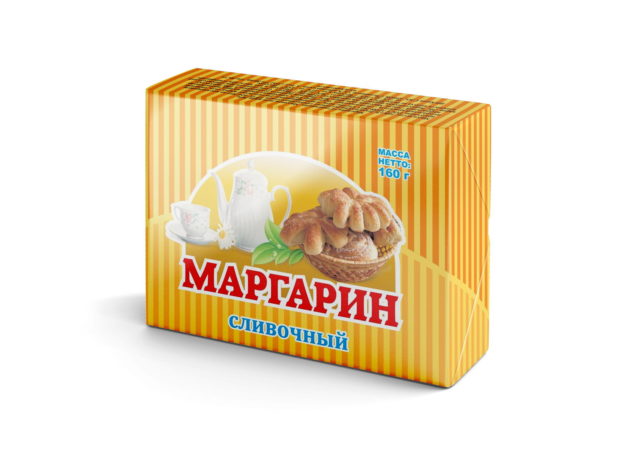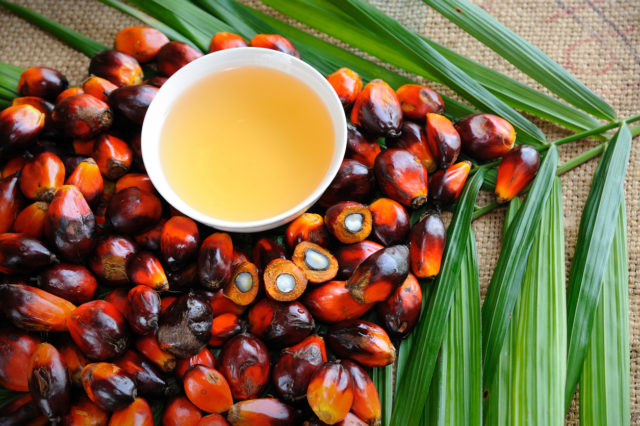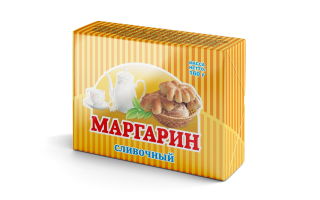Content
The harm of margarine has long worried housewives who use it in baking. The product consists of hydrogenated vegetable oils, enriched with various additives and coloring agents. It was originally developed as a more affordable substitute for butter.
The chemical composition of margarine
Margarine is a product based on animal and vegetable fats. In cooking, it is often used for confectionery. In addition to the main component, the composition contains emulsifiers, salt, sugar and dyes.
Emulsifiers are needed to retain moisture and increase product shelf life. Acids are added to increase microbiological resistance.
The chemical composition is represented by the following substances:
- trans fats;
- protein;
- vitamins of groups B, E, K, C and A;
- saturated acids;
- casein;
- minerals (calcium, sodium, phosphorus, potassium and magnesium).
To reduce the calorie content of the product, coconut or palm oil is added to its composition. In this case, the mass becomes more plastic. In Germany, pork lard is used in the recipe.
Why is margarine useful?
Today, the beneficial properties of margarine are questionable. The main advantage of the product is its rich fat content. Due to this, he quickly copes with the feeling of hunger. The unsaturated fatty acids present in it have a positive effect on blood composition.

It is believed that the range of useful actions of a substitute directly depends on the quality of the raw materials used. In addition, it contains a lot of vitamins and minerals. When consumed in moderation, the product replenishes their supply without adversely affecting health.
Why is margarine harmful?
The main danger of the product is its trans fat content. They increase the level of bad cholesterol, making you more likely to develop heart disease. Under certain circumstances, they are capable of intensifying inflammatory processes in the body. Trans fats are especially dangerous for children. They inhibit development and increase the risk of an allergic reaction. The product contains other chemical additives. They are removed from the body for a long time, exerting a destructive effect on it.
Why is margarine harmful to the body
To understand what is more, the benefits or harms of margarine in baking, it is enough to study its composition. Statistics show that regular use of the product provokes the development of coronary artery disease. There is also an opinion that it is capable of provoking infertility. This is due to impaired blood circulation as a result of changes in the structure of blood vessels.
The harmful effects of the product on health are as follows:
- decreased immunity;
- blockage of blood vessels by atherosclerotic plaques;
- violation of reproductive function;
- increased likelihood of developing diabetes mellitus;
- metabolic disease.
In men, the presence of oil substitute foods in the diet can cause changes in the quality of semen. This affects the ability to conceive and erectile function. In some cases, it leads to inflammation of the prostate gland.
What is more harmful - butter or margarine
Unlike margarine, butter is of natural origin. It is based on cream. Unlike margarine, the product does not contain trans fats, which have a depressing effect on the heart and blood vessels. Most of the composition is represented by saturated fats, which lower the level of bad cholesterol and increase the amount of good. That is why butter does not provoke vascular pathology. Its undoubted advantages also include a pleasant creamy taste. A more budget-friendly counterpart may have a chemical flavor. For this reason, it is not used for making sandwiches.
In addition, butter contains many vitamins and minerals. They have a beneficial effect on the functioning of internal organs, the condition of the skin, hair and nails. Margarine is more harmful than butter. Its only advantage is calorie content. It is 713 kcal per 100 g. The calorie content of butter is 748 kcal per 100 g of product.
What's more harmful - margarine or palm oil
Palm oil and margarine have roughly the same health hazard levels. Palm oil is a natural product made from refractory fats. They accumulate in the body, causing various diseases.

The origin of the product is considered to be Western Guinea. It is made from the fruit of the oil palm. Palm oil does not increase the level of bad cholesterol in the body. If the product is supplied in limited quantities, it does not have a significant health impact.
What is more harmful - margarine or spread
A spread is a product that is plastic in structure and consists of several types of fats. Its composition, unlike margarine, is fully regulated by GOST.
There are three types of spreads on sale:
- vegetable and fatty;
- vegetable-creamy;
- creamy vegetable.
The nature of the effect of the product on the body depends on its composition. If low-quality raw materials were used in the manufacture, the spread is harmful to health. A good product, compared to margarine, is less harmful. It saturates the body with nutrients and improves the digestion process.
Contraindications to margarine
Butter substitute is a highly controversial product. Supporters of the right lifestyle do not approve of its presence in the diet. In addition, he has a number of contraindications.
Among them are the following:
- obesity;
- chronic diseases of the digestive system;
- diabetes;
- the period of breastfeeding and pregnancy;
- age under 12;
- metabolic disease;
- cardiovascular pathology.
If you do not take into account the contraindications, you can face quite serious complications. For example, margarine with HS can reduce the quality of milk. In diabetes mellitus, eating a product provokes a jump in insulin. In the case of cardiovascular diseases, margarine increases the risk of heart attack and stroke. At the age of over 40, it is advisable to reduce the amount of margarine consumed to a minimum. This will have a positive effect on the state of blood vessels.
Rules for using margarine
To neutralize the harm of margarine, you need to use it in accordance with certain rules. First of all, this concerns the frequency of use. The less often a product is used, the less harm it does. To control its intake, you must carefully read the composition of the confectionery. The product is often added to waffles, cookies, cakes and other baked goods.
It is undesirable to eat dishes containing margarine in the afternoon. The product is considered difficult to digest and can lead to insomnia and stool problems. When using margarine in cooking, it should be borne in mind that it significantly increases the calorie content of the dish. This information is especially relevant during weight loss.
For the safety of the analogue of butter, it is important to place it in the refrigerator. The optimum storage temperature ranges from 0 to - 4 ° C. The product can be stored frozen for 2 months. For storage, you need to use foil or paper packaging. This will extend the shelf life and protect against the absorption of foreign aromas.
Conclusion
The harm of margarine is manifested with excessive use of the product. That is why nutritionists recommend limiting the amount of sweets and flour products in the diet. It is advisable to cook baked goods yourself, using butter instead of margarine.

